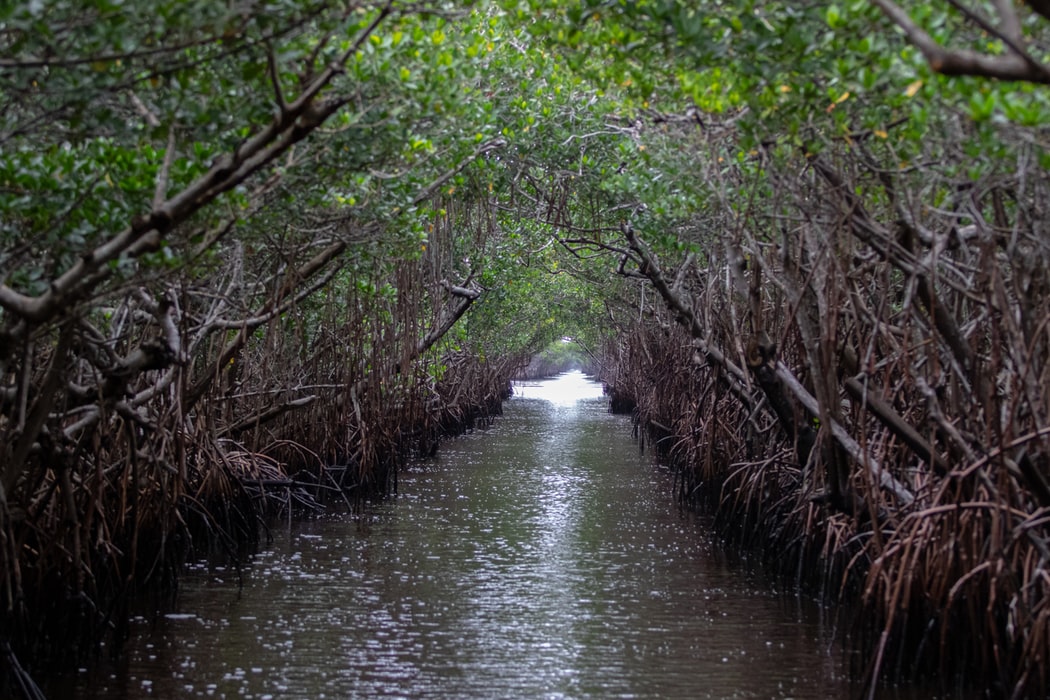By Victor Rivera-Diaz, Staff Writer & Researcher at Save The Water™ | August 12, 2020
With a river system unlike any other, the Everglades in southern Florida is a subtropical wilderness filled with life. Yet, it is constantly at risk for mercury water pollution. The neurotoxic substance is present in the tissue of wildlife, including fish typically caught for human consumption.
Moreover, for the 7 million Floridians who get their drinking water from this ecosystem, mercury water pollution poses a public health risk. In response, researchers from university and state water agencies issued their annual report in line with ongoing strategies to limit mercury in water.
Mercury In Bodies of Water, Animals, and Humans
Spanning 1.5 million acres, the Everglades was a key topic in the 2020 South Florida Environmental Report by the South Florida Water Management District (SFWMD). The report found mercury levels higher than the standards set by the United States Environmental Protection Agency (USEPA).
To begin with, inorganic mercury can turn into its organic form, methylmercury (MeHg), in surface waters. Methylmercury can then accumulate in food chains. In other words, the mercury levels in an ecosystem increase as predators eat their respective prey for survival. Consequently, methylmercury was the indicator of choice for mercury water pollution in the report.
For example, mosquitofish tissue contained levels of methylmercury as high as 0.079 mg/kg. The US only allows for 0.077 mg/kg for this species type. Larger animals such as freshwater alligators and diving birds prey upon mosquitofish.
Among fish caught as food, largemouth bass tissue contained levels reaching 1.132 mg/kg. The USEPA standard is 0.300 mg/kg. In the same vein, these numbers help determine estimates of inorganic mercury (Hg) levels.
In theory, both forms could make their way into the Biscayne Aquifer which collects water from the Everglades National Park. The Dade, Broward and Palm Beach Counties all receive their drinking water from this source.
Mercury Enters the Everglades in a Number of Ways
Although it is a natural substance, mercury is considered a neurotoxin. It targets the nervous system. Exposures to elevated levels of this substance can result in an array of health effects that range from mild to severe. Other factors that influence the severity include exposure route, age, length of time, and the overall health of an individual.
Thus, the concern for high levels of mercury in the Everglades began in the 1970’s. In short, the rise of human activities in the area was the main culprit. The proximity to industrial, agricultural, and residential areas made it easy for polluted runoff to spread across this interwoven landscape.
To add, the burning of things like fuels and medical waste can cause mercury to become airborne through evaporation. From there, it can travel far and eventually reach bodies of water.
“Mercury exposure is a global concern,” explained Inger Andersen, Executive Director of the United Nations Environment Programme (UNEP). “Every year, as much as 9,000 tons of mercury are released into the atmosphere, in water and on land.”
In 1989, a Florida panther died of mercury poisoning with roughly 110 mg of the substance in its body tissue. At this level, it can be lethal even for humans. This prompted state authorities to implement stricter regulations against wastewater runoff.
Other factors make the Everglades prone to mercury water pollution. For instance, there is a link between sulfate and methylmercury production. Sulfates are another main pollutant in the area, largely due to agricultural runoff.
As sulfates enter the water, they stimulate bacteria which reduce sulfate. However, this same bacteria also methylates inorganic mercury.
Finally, the prevalence of cattails also increases methylation as they can draw in airborne mercury.
A Local Problem, A Global Concern for Mercury Emissions
Beginning in the 1990s, the SFWMD has worked to reduce mercury water pollution in the Everglades. From better regulations to the construction of artificial wetlands, the goal of these solutions is to restore the natural landscape. What is more, a wetland is a system that is able to regulate itself. It can keep large-scale pollution to a minimum as a result.
However, the prospect of completely removing mercury and its effects from the Everglades is not entirely possible in the short-term. Once the substance enters the environment, it can turn into methylmercury over many years.
For this reason, the world community came together to sign The Minamata Convention on Mercury in 2017. Through this international treaty, governments agreed to limit the use and exposure to mercury.
Finally, the recent assessment by the UNEP tied human activities to a global 450% increase of mercury in the air. The assessment did note, however, modest decreases in emissions due to continuing action. This occurred mainly in North America and the European Union.
Learn More
If you would like to keep up with the health of the Everglades, take a look at the projects listed below:
- Learn more about the Everglades Study Project Proposal at Save The Water™ here
- Check out the reasons why restoration of the Everglades would be beneficial
- Visit the official Everglades Restoration webpage of the U.S. Department of the Interior
- If you aren’t local, check out the media resources provided by the U.S. National Park Service




